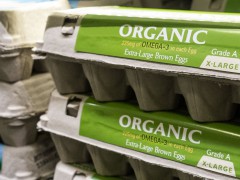It is no secret that high fructose corn syrup has had a rough decade. In response, the corn industry is trying to re-brand their product as “corn sugar”, under the theory that if just the name is changed, somehow the product will shed its bad rep overnight. It’s so brazenly patronizing it just might work. In a response to the response, producers of refined sugar have taken umbrage. In a California federal court, sugar refiners have sought to enjoin the corn industry from using the word “sugar” as part of the rebranding drive.
Settling this bittersweet (see what I did there?) food fight calls for some real bureaucratic, regulatory minutiae. Who’s ready for a nap?
The Food and Drug Administration, believe it or not, quietly and methodically regulates a compendium of words used to label and market food. The goal of this monumental effort is to fix the definition of foods and to regulate the words companies use to market them in order to minimize customer confusion. These definitions are called ‘standards of identity’. The FDA has standards of identity for goods like margarine, frozen cherry pie, asiago cheese, and almost everything else you have ever eaten. These reams are every bit as boring as they sound. They will, however, help resolve the fight between King Corn vs. Big Sugar (though it is a shame that these two pampered, heavily subsidized industries can’t both lose).
Sure enough, there are standards of identity for sweeteners, too. 21 CFR 168.110 sets the definition of anhydrous dextrose, the stuff that looks like table sugar, as purified and crystallized glucose, without water of crystallization, with a total solids content not less than 98.0 percent. The name of a sugar product can be prefaced by the name of the food source which contributed the raw material for the sweetener. That means you can label a product beet sugar, corn sugar, or cane sugar only if those products contributed the raw materials for the sugar.
21 CFR 168.120 fixes the definition of sweet syrups as “the purified, concentrated, aqueous solution of nutritive saccharides obtained from edible starch.” The same naming conventions apply to syrups which apply to anhydrous sugars; corn syrup if derived from corn, sorghum if it comes from sorghum.
The sugar/syrup divide is delineated entirely on the moisture content of the sweetener at issue. My guess is that the matter pending in LA federal court will be determined by these dreary principles of elemental chemistry.
I wager that King Corn will be the loser. The infrastructure of HFCS is designed to handle an aqueous product, currently defined by the rules as “syrup”. The pipes and tanks that the food industry uses to hold, pump, and transport liquid corn sweetener represents a capital investment too significant to be abandoned. Drying out their product so that it meets the standard of identity for anhydrous, even if economically feasible, would nullify these investments. Like our generation of obese youth, Big Corn is irrevocably sailing on a river of sweet, sticky liquid gold. Refined sugar has the regulatory advantage right now, unless Corn successfully lobbies the FDA to change its standards of identity, which it is trying to do.

















